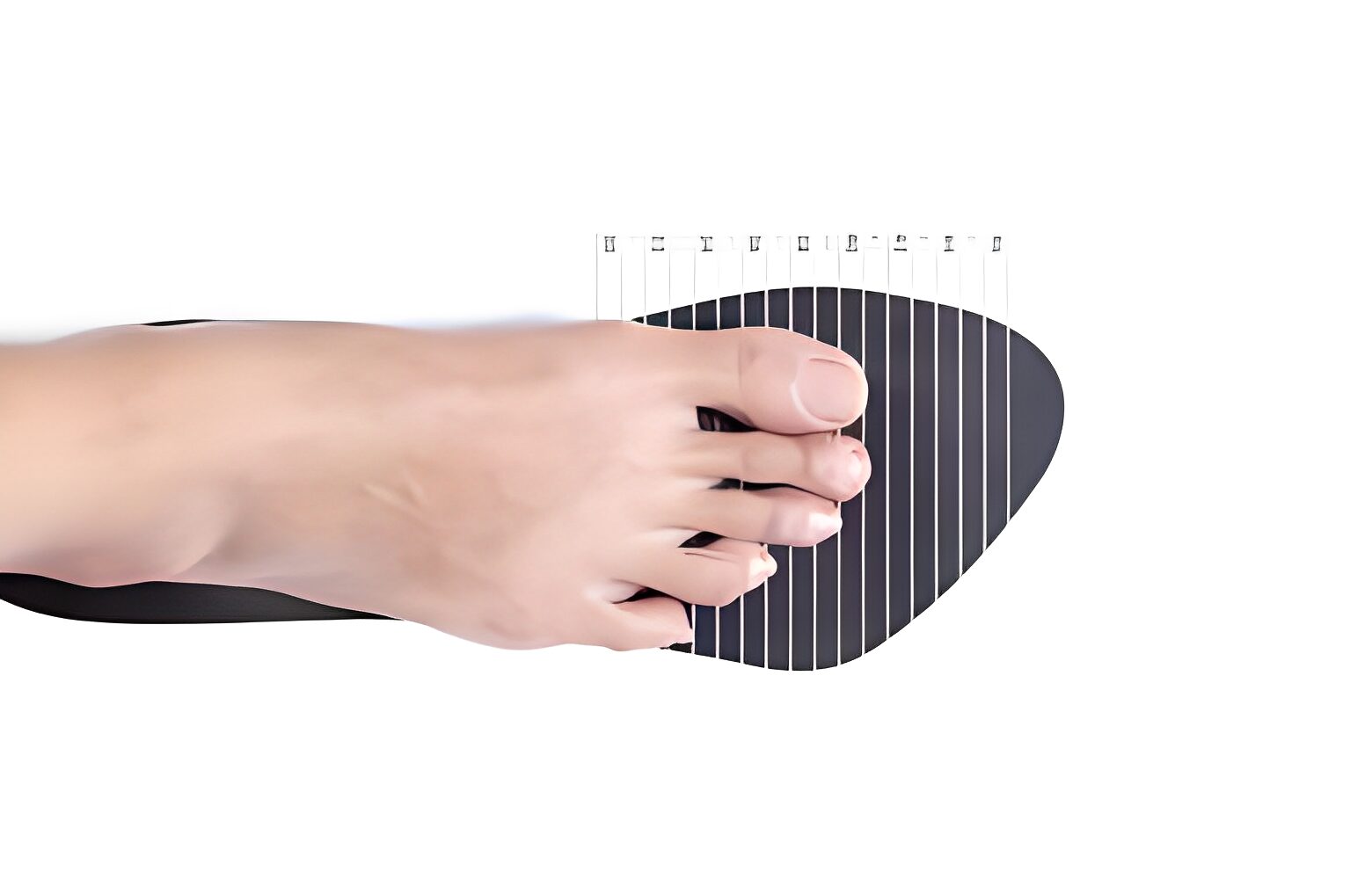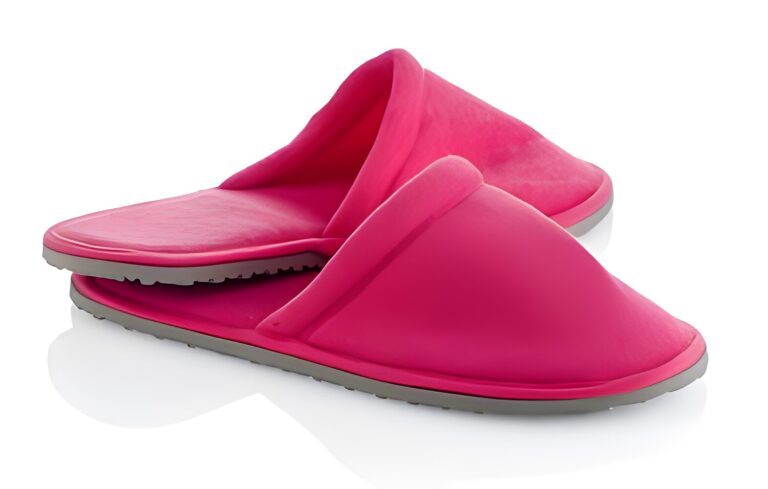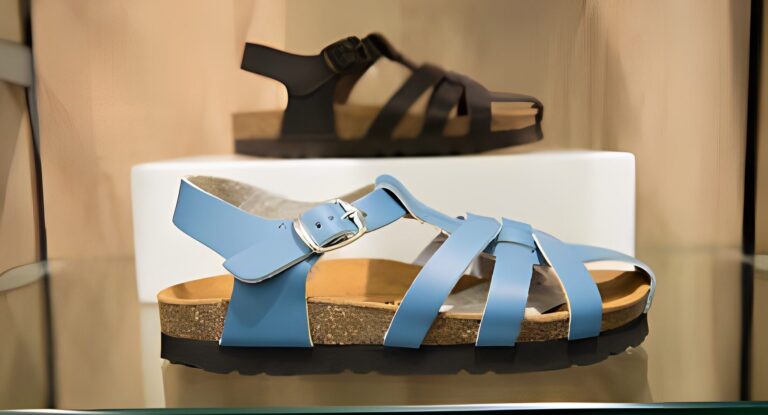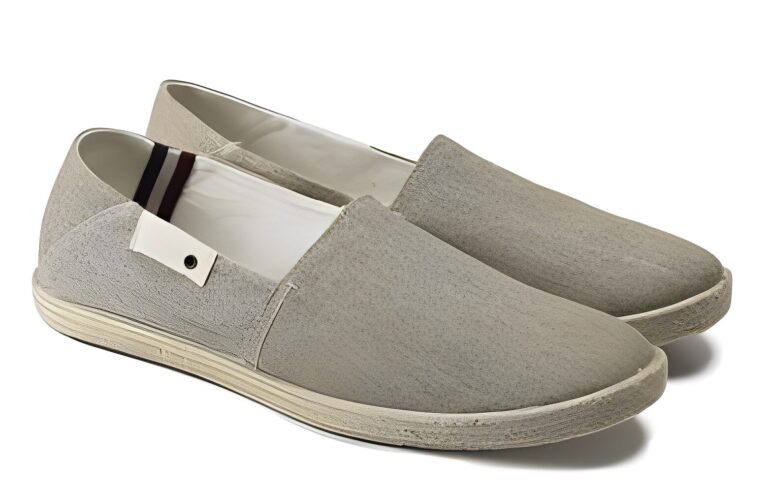How to Measure Your Shoe Size at Home
Finding the perfect fit for your shoes is essential for comfort, performance, and avoiding potential injuries. Whether you’re unable to visit a store for a fitting or prefer to purchase online, measuring your shoe size at home is a simple and convenient solution. In this comprehensive guide, we’ll walk you through the step-by-step process of accurately measuring your shoe size at home. From gathering the necessary tools to considering foot width, we’ll cover everything you need to know to ensure a proper fit. So let’s get started!
The Importance of Accurate Shoe Measurement
Accurate shoe measurement is crucial for several reasons. First and foremost, it ensures that you get the best, most comfortable fit possible. Ill-fitting shoes can lead to discomfort, blisters, and even foot problems in the long run. Additionally, wearing the wrong shoe size can affect your performance in various activities, such as running or sports. By measuring your shoe size accurately, you can maximize your performance potential and reduce the risk of injuries.
Tools You’ll Need
Before you begin measuring your shoe size at home, make sure you have the following tools:
- Paper
- Pen
- Tape measure or ruler
Having these tools on hand will allow you to trace your feet and measure them accurately.
Read More: Can You Wear White Shoes to a Wedding?
Step 1: Tracing Your Feet
To start, place a piece of paper on the floor and position your heel against a wall. Using a pen, trace the outline of your foot as closely as possible. It’s important to repeat this process for both feet, as one foot is often slightly larger than the other.
Tips for a Precise Tracing:
- Measure in the evening when your feet are at their fullest shape.
- Be barefoot or wear the socks you plan to wear with your new shoes.
- Stand on a hard surface to ensure accurate measurements.
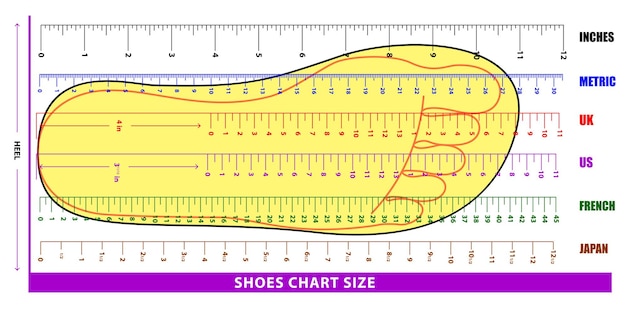
Step 2: Measuring Foot Length
Once you have traced both feet, use a tape measure or ruler to measure the distance from your heel to the longest toe. This measurement represents the length of your foot in centimeters.
Tips for Accurate Measurements:
- Ask a friend to help you measure if possible.
- Stand straight with your weight evenly distributed on both legs.
- Measure the distance between the two most prominent points on your traced foot.
- Write down the measurements and use the longer foot’s measurements for accuracy.
Step 3: Finding Your Shoe Size
To determine your shoe size, you can use a shoe size conversion tool. These tools provide data from various shoe brands, allowing you to input your foot measurements and find the corresponding size. It’s important to consider the brand you plan to purchase from, as size may vary depending on the shoe type, model, materials, and your unique foot shape.
Understanding Gender Differences
Shoe sizes can differ between men and women. When using a shoe size conversion tool, make sure to choose the appropriate gender and input your foot length accurately. This will ensure that you find the most accurate size for your needs.
Considering Foot Width
While foot length is essential for finding the right shoe size, foot width is another important factor to consider. If you often find yourself frustrated with the fit of shoes in your regular size, such as needing extra space or a snugger fit, it’s likely that you require an alternative width.
The Complexity of Shoe Width
Determining shoe width can be more challenging than determining shoe length. Brands typically don’t provide reference charts for shoe width, making it difficult to find the right width without trying on the shoes. However, you can get a general idea of a shoe’s width based on letter indications such as “B,” “D,” or “2E.”
General Indications of Width
Here is a general guide to shoe width indications:
| Width | Women’s | Men’s |
|---|---|---|
| 4A (AAAA) | Extra Narrow | – |
| 2A (AA) | Narrow | Extra Narrow |
| B | Medium | Narrow |
| D | Wide | Medium |
| 2E (EE) | Extra Wide | Wide |
| 4E (EEEE) | XX-Wide | Extra Wide |
| 6E (EEEEEE) | – | XX-Wide |
It’s important to note that shoe width can vary among brands, and there is no universal standard. The best way to determine the right width is to try the shoes on and assess the fit.
Brands Offering Multiple Width Options
Some shoe brands, such as Skechers, New Balance, Saucony, and Brooks, offer models in multiple width options. If you require a specific width, consider exploring these brands as they cater to various foot widths.
Ensuring the Right Fit
When trying on shoes, there are several fit considerations to keep in mind to ensure the right fit for your feet. These considerations vary depending on the type of footwear, but some general guidelines apply.
Key Fit Considerations
- Heel: The heel should be locked in and not slipping out when you bend your foot, walk, or run.
- Midfoot: The midfoot should feel snug but not tight, with no pinching or discomfort.
- Toebox: There should be enough space for your toes to splay sideways without pressure, and there should be a thumb’s width space between your longest toe and the shoe’s front.
Niche Sportswear and Fit Standards
It’s important to note that some niche sportswear, such as track spikes, cycling shoes, and climbing footwear, may have different fit standards. These types of shoes often require a snug, second-skin-like fit for optimal performance. If you participate in these activities, be sure to research the specific fit requirements for the footwear you need.
Read More: How to Measure a Duffel Bag for Carry On
Customized Lacing Techniques
In some cases, you may encounter fit issues such as heel slipping, discomfort due to high arches, or a tendency for foot swelling. In these situations, customized lacing techniques can help improve the fit. Experiment with different lacing patterns to alleviate specific fit issues and enhance overall comfort.
The Importance of Regular Measurements
It’s essential to measure your feet regularly and right before looking for new shoes. Our bodies and feet can change over time due to various factors. By measuring your feet frequently, you can stay aware of any changes in foot dimensions and ensure that your shoes continue to fit properly.
Factors Impacting Foot Dimensions
Several factors can affect foot dimensions over time:
- Significant changes in physical activity levels
- Development of foot conditions such as bunions, arthritis, edema, or hammertoes
- Weight gain or loss
- Pregnancy
Being aware of these factors can help you understand why measuring your feet regularly is crucial for maintaining proper shoe fit.
Insole Length vs. Shoe Size
When it comes to determining shoe size, it’s important to note that insole length alone does not provide an accurate measurement. Insole lengths can vary depending on the shoe’s toebox shape. To ensure the best fit, it’s safer to reference the CM/CHN/JP/Mondo measurement listed on the shoe that fits you well.
The Variability of Insole Length
Insole lengths of running shoes, for example, can vary significantly even within the same size. In our lab, we measured the insole length of 20+ running shoes in men’s US size 9 and observed a range from 271 to 287 mm, with a 16 mm discrepancy. This observation highlights the importance of considering other factors beyond insole length when determining shoe size.
Relying on CM/CHN/JP/Mondo Measurements
To ensure accuracy when determining shoe size, refer to the CM/CHN/JP/Mondo measurement provided by the shoe manufacturer. This measurement is more reliable than relying solely on insole length.
FAQ
How often should I measure my feet?
Can I use insole length to determine my shoe size?
What if my feet are different sizes?
How do I know if the fit is right?
Conclusion
Measuring your shoe size at home is a simple and effective way to ensure a proper fit. By following the step-by-step guide outlined in this article, you can accurately measure your feet and find the right shoe size. Remember to consider foot width, try on shoes for the best fit, and measure your feet regularly to adapt to any changes. With a comfortable and well-fitting pair of shoes, you can enjoy optimal performance and reduce the risk of discomfort or injuries.

